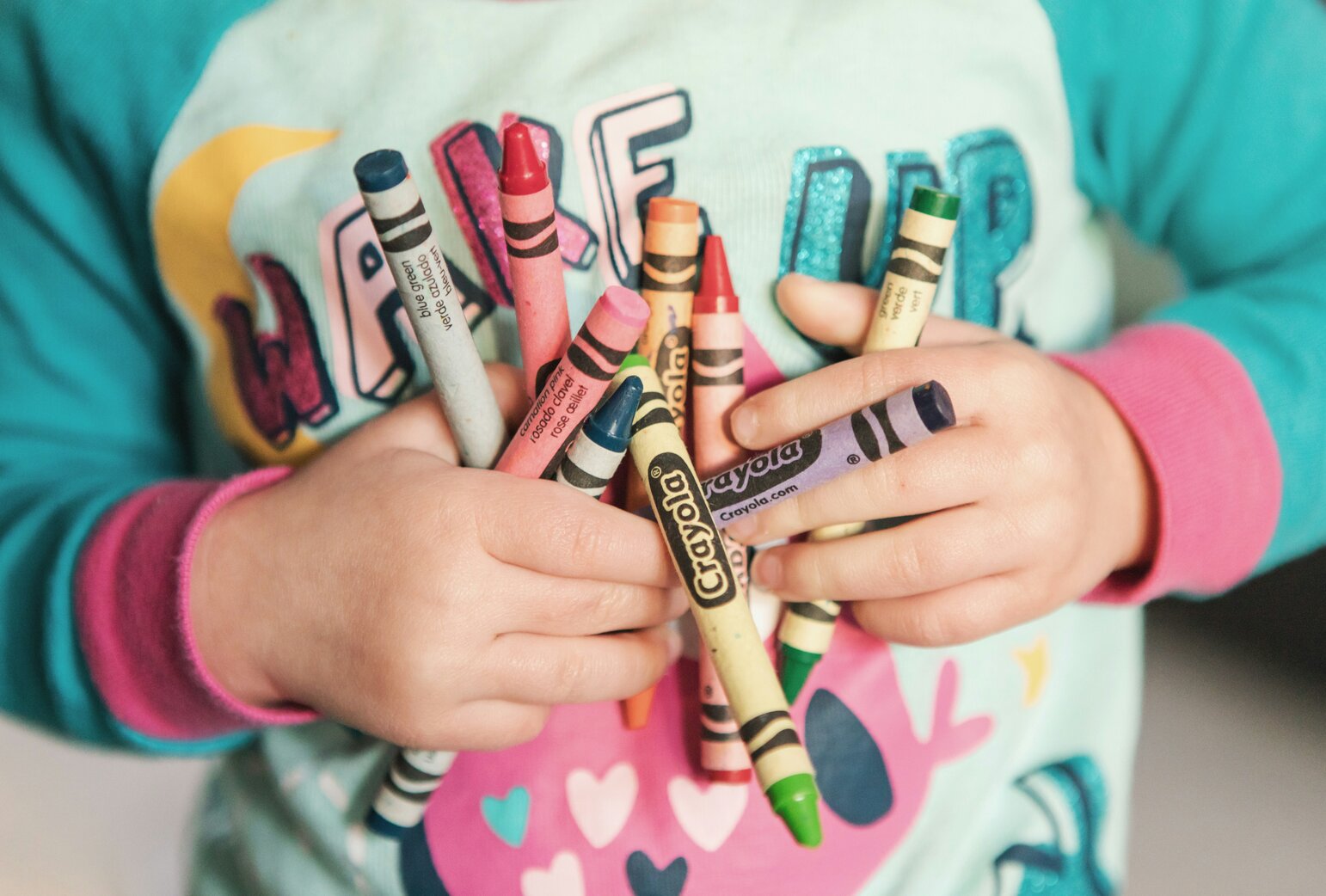Children’s music has undergone significant transformation from the simple nursery rhymes of the past. The current landscape presents a remarkable array of styles, methods, and educational philosophies that captivate young audiences while often entertaining parents as well. From popular YouTube sensations to innovative artists redefining “kids’ music,” this is an exhilarating time for children’s musical entertainment.
This guide delves into the top children’s music creators across various categories, emphasizing what makes each unique and why they resonate with younger listeners.
Digital Superstars
Cocomelon: The Animated Phenomenon
Cocomelon has achieved remarkable cultural significance in children’s music. Initially starting as a YouTube channel, it has transformed into a global multimedia giant that influences how millions of children engage with music and education.
Cocomelon’s distinctive 3D-animated videos showcase nursery rhymes and original songs featuring a stable cast of characters, including Baby JJ and his family. The high production quality is evident in the vibrant colors, engaging animations, and professionally crafted music.
The effectiveness of Cocomelon lies in its blend of traditional nursery rhymes with original themes reflecting everyday childhood experiences such as bedtime routines, trying new foods, and social-emotional learning. The simple, repetitive melodies are perfectly tailored for young children, while the consistent visual style provides familiarity and comfort.
Parents appreciate Cocomelon’s educational focus, covering letters, numbers, counting, colors, and social skills. The channel has expanded its reach to include Netflix series and merchandise, forming a comprehensive ecosystem of children’s entertainment.
Super Simple Songs: Educational Excellence
Super Simple Songs has established a unique niche in children’s music by emphasizing clarity, simplicity, and educational value. Their approach distills children’s songs to their most accessible elements, making them perfect for young learners and those developing language skills.
What sets Super Simple Songs apart is their meticulous attention to pacing, clear pronunciation, and thoughtful educational design. Each song is crafted with specific learning objectives in mind, whether it’s teaching basic vocabulary, social skills, or movement.
Familiar characters like The Super Simple Puppets and Caitie’s Classroom create consistent touchpoints for young audiences, while colorful animations maintain attention without overwhelming sensory input. The music production strikes a harmonious balance—pleasant for adults yet simple enough for children to follow and sing along.
For parents and educators seeking children’s music with tangible educational benefits, Super Simple Songs represents one of the most thoughtful options available, with content that evolves with children from infancy through early elementary years.
Innovative Approaches to Children’s Music
Plooshi: Multi-Genre Innovation
Plooshi has been revolutionizing children’s music by integrating multiple genre styles into familiar childhood content. Their catalog encompasses various musical styles, each contributing something distinctive to the children’s music scene.
Plooshi’s Techno for Kids
Plooshi’s Techno for Kids incorporates electronic music elements into classic nursery rhymes and children’s songs. By merging familiar melodies with synthesizers and electronic production techniques, these tracks create an engaging sonic experience that appeals to modern parents while keeping children entertained.
This approach is particularly intriguing as it exposes children to diverse sonic textures and musical styles beyond traditional children’s music. The upbeat nature of many electronic tracks also makes them ideal for movement activities and dance breaks.
Plooshi Raps
Offering a different perspective, Plooshi Raps introduces age-appropriate hip-hop elements to children’s content. These tracks maintain kid-friendly themes while incorporating rhythm, rhyme, and spoken-word delivery that aids in developing language skills and phonological awareness.
The rhythmic quality of these songs captivates children’s innate sense of rhythm, while the engaging delivery keeps their attention. For parents looking to diversify their children’s musical diet beyond traditional nursery rhymes, Plooshi’s multi-genre approach provides excellent entry points into different musical styles.
Lenny Pearce: Electronic Nursery Innovations
Lenny Pearce is a pioneer in creating electronic interpretations of classic children’s songs, blending contemporary production techniques with timeless content. His work reimagines familiar nursery rhymes using electronic beats and modern arrangements.
What distinguishes Pearce’s music is how it retains the core melodies and lyrics that children recognize while wrapping them in contemporary production. This dual appeal allows both parents and children to genuinely enjoy the music—children connect with familiar themes while adults appreciate the modern approach.
Pearce’s productions often feature rhythmic elements that encourage movement and dance, making them perfect for active play and physical development. The electronic nature of the tracks introduces children to unique instrumental sounds and production techniques they may not encounter in traditional children’s music.
Humor in Children’s Music
Farts McGee: Humor That Connects with Kids
Farts McGee has carved out a unique niche by capitalizing on children’s love for bathroom humor. By substituting traditional drum sounds with fart noises in covers of popular nursery rhymes, this creator has developed content that consistently entertains young listeners.
While this approach may seem silly at first glance, it resonates developmentally. Young children are often fascinated by bodily functions as they become aware of their bodies. Content that playfully acknowledges this interest can connect profoundly with children’s genuine interests.
The musical arrangements remain true to the original melodies, ensuring educational value is preserved while the unexpected sound effects add an element of surprise and delight. This blend of familiarity and novelty creates a particularly engaging experience for young audiences.
For parents open to a bit of bathroom humor, Farts McGee’s music often succeeds in engaging children who may otherwise have limited interest in musical activities, making it a valuable addition to a diverse children’s music library.
The OK Go Effect: “Not Children’s Music” for Children
Although not strictly a children’s music group, the band OK Go deserves recognition for their influence on children’s musical experiences. Their intricately choreographed music videos, such as “This Too Shall Pass” and “Here It Goes Again,” have gained popularity among child viewers, demonstrating how sophisticated music can engage young audiences when paired with visually captivating content.
Their Rube Goldberg machine videos, in particular, intrigue children with cause-and-effect sequences, indirectly introducing physics concepts through musical entertainment. This phenomenon illustrates that children’s music doesn’t always need to be specifically created for children to resonate with them.
For parents seeking music that evolves with their children or offers mutual enjoyment, bands that produce visually engaging content without targeting children can be excellent additions to family playlists.
Traditional Excellence
Raffi: The Enduring Standard
No conversation about children’s music is complete without mentioning Raffi, whose impact on the genre has been profound for generations. Since the 1970s, his gentle acoustic style and respect for children’s intelligence have resulted in timeless classics like “Baby Beluga,” “Bananaphone,” and “Down by the Bay.”
What makes Raffi’s work enduring is its inherent kindness and simplicity. His arrangements prioritize natural instruments and clear vocals, allowing children to focus on lyrics and melody without distractions. His respect for his audience—what he terms “child honoring”—is evident in songs that never condescend to children.
For parents in search of timeless children’s music that stands apart from more frenetic contemporary options, Raffi’s catalog remains a fundamental resource for any child’s musical library. His influence resonates throughout the children’s music landscape, inspiring many contemporary creators.
Caspar Babypants: Indie Sensibility for Young Listeners
Created by Chris Ballew (formerly of The Presidents of the United States of America), Caspar Babypants infuses an indie rock sensibility into children’s music. His work blends original compositions and reimagined traditional songs with arrangements that are both sophisticated and accessible.
What sets Caspar Babypants apart is that the music never feels like a compromise. Ballew applies the same creativity and musicality to these recordings that he used in his adult-oriented music, resulting in songs that parents genuinely enjoy alongside their children.
His soothing vocals, clever lyrics, and warm acoustic arrangements create a listening experience that calms rather than overstimulates, making his music ideal for everyday listening rather than solely for active play times. For families seeking children’s music with an artisanal, handcrafted quality, Caspar Babypants represents some of the finest work available.
Educational Approaches
They Might Be Giants: Never Underestimating Young Minds
They Might Be Giants artfully transitioned from alternative rock to children’s music with albums such as “Here Come the ABCs,” “Here Come the 123s,” and “Here Comes Science,” infusing their trademark wordplay and musical creativity into educational content.
Their children’s catalog stands out because it never oversimplifies concepts. Instead, it retains the intellectual curiosity and lyrical cleverness of their adult work while addressing topics relevant to young learners. The result is music that respects children’s intelligence while sparking their imaginations.
Their science-themed songs, in particular, occupy an important niche, tackling concepts like the scientific method, states of matter, and even photosynthesis with musical approaches that render complex ideas accessible without diluting the underlying science. For parents seeking music that educates while entertaining, They Might Be Giants’ children’s albums are landmark achievements.
Emily Arrow: Literature-Inspired Learning
Emily Arrow has developed a distinctive method by crafting songs inspired by children’s literature. Her music serves as an extension of beloved picture books, enhancing children’s connections to stories they already love.
This approach is especially beneficial for early literacy, reinforcing narrative comprehension through multiple modalities. When children experience a story through both reading and music, they forge deeper connections to the material.
Arrow’s gentle ukulele-based arrangements and clear vocals beautifully complement the children’s literature that inspires her work. For parents and educators aiming to enhance the reading experience and foster literacy connections, her literature-based songs create perfect bridges between story time and music time.
World Music for Children
Putumayo Kids: Global Musical Journeys
The Putumayo Kids series has been exposing children to global musical traditions for decades through thoughtfully curated compilations such as “World Playground,” “Latin Playground,” and “African Playground.”
These collections introduce young listeners to diverse instruments, languages, rhythms, and musical styles from around the globe, fostering appreciation for cultural diversity through the universal language of music.
What makes the Putumayo collections especially valuable is their authenticity—these are genuine recordings from various cultures rather than westernized interpretations of international music, selected for their accessibility to young audiences. The accompanying materials often provide cultural context and information, adding educational value beyond the musical experience itself.
For families aspiring to cultivate global citizenship and cultural appreciation, the Putumayo Kids collections offer an exceptional gateway to world music traditions that honor both the cultures represented and the children listening.
Ziggy Marley: Reggae for Families
Continuing his father’s musical legacy while forging his own path, Ziggy Marley’s family music albums like “Family Time” and “More Family Time” deliver reggae rhythms and uplifting messages to young audiences.
Marley’s family music retains the quintessential elements of reggae—the distinctive rhythm patterns, focus on bass, and themes of unity and positive social change—while adapting content to address issues relevant to children and families.
These recordings frequently feature collaborations with other musicians, creating a rich sonic landscape that introduces children to reggae music through authentic rather than simplified presentations. For families looking to diversify their musical options while introducing children to specific cultural traditions, Marley’s family-oriented albums serve as an excellent entry point into reggae music.
Emerging Trends in Children’s Music
Mindfulness and Emotional Intelligence
A growing segment of children’s music specifically targets social-emotional learning, mindfulness, and emotional intelligence. Artists in this sphere create songs that assist children in identifying feelings, developing coping strategies, and building relationship skills.
Groups like The Emotion Explorers and individuals like Kira Willey produce music explicitly designed to foster emotional vocabulary and self-regulation skills. These songs often incorporate breathing techniques, simple movement exercises, and lyrics that acknowledge and normalize various emotional experiences.
This trend aligns with broader educational priorities around social-emotional learning and mental health awareness. For families prioritizing emotional intelligence alongside academic readiness, these specialized musical resources can become invaluable tools for development and discussion.
Representation and Diversity
The children’s music landscape continues to grow more diverse, with creators like Pierce Freelon, SaulPaul, and 123 Andrés introducing perspectives and musical traditions that reflect a broader range of cultural experiences than has historically been represented in the genre.
This expansion is crucial, not only for providing children from diverse backgrounds with music that mirrors their experiences but also for exposing all children to varied voices and perspectives from an early age.
As the field diversifies, children benefit from hearing multiple musical traditions, languages, and storytelling techniques, preparing them for participation in an increasingly global society where cultural fluency is an essential skill.
Choosing the Right Music for Different Ages
Infants and Toddlers (0-2 years)
For the youngest listeners, simplicity is key. Music with clear, uncluttered arrangements, gentle vocals, and moderate tempos is often most suitable. Repetition benefits their developing brains, so songs with repeated phrases and predictable patterns are ideal.
Recommended artists for this age group include Raffi, Super Simple Songs, and Emily Arrow, whose clear delivery and straightforward arrangements provide the appropriate level of stimulation without overwhelming developing sensory systems.
Preschool (3-5 years)
As children develop language skills and more complex movement abilities, they can engage with more intricate music. This age group usually enjoys songs that incorporate movement, call-and-response elements, and simple narrative structures.
Artists such as Cocomelon, Caspar Babypants, and Plooshi provide content that aligns with this developmental stage, featuring engaging stories, interactive elements, and themes that support vocabulary and concept development.
Early Elementary (6-8 years)
Children in this age range often cultivate specific musical tastes and a greater appreciation for humor, making them more receptive to sophisticated content. They can grasp more complex lyrics and appreciate musical jokes and wordplay.
They Might Be Giants, Farts McGee, and the more intricate offerings from Plooshi often resonate with this age group, delivering content that challenges their developing minds while maintaining age-appropriate themes.
Integration with Learning
Beyond Background Noise: Active Musical Engagement
The most effective use of children’s music transcends passive listening, encouraging active engagement. Research consistently indicates that the developmental benefits of music are most pronounced when children actively participate rather than simply hearing music in the background.
This participation can take various forms:
– Movement and dance, developing coordination and spatial awareness.
– Singing along to support language development.
– Playing simple percussion instruments to build rhythm skills and fine motor control.
– Acting out song narratives to encourage symbolic thinking and creativity.
The best children’s music facilitates this active engagement, featuring clear rhythms suitable for movement, lyrics that invite singing along, and content that sparks imagination and play.
Cross-Curricular Connections
Music naturally intersects with other learning areas, creating opportunities for integrated educational experiences. Songs about counting reinforce mathematical thinking, while music celebrating nature connects with science learning. Multilingual songs promote linguistic development, and music from various cultures enriches social studies education.
For educators and parents seeking to maximize learning opportunities, selecting music that reinforces current themes creates valuable reinforcement and renders learning more engaging and memorable.
Conclusion: The Expanding Universe of Children’s Music
The realm of children’s music continues to evolve, with traditional methods retaining their significance while new creators explore innovative paths. From the widespread appeal of platforms like Cocomelon to niche artists catering to specific interests, the current landscape boasts an unprecedented variety and quality.
What unifies the finest children’s music—regardless of style, approach, or medium—is a profound respect for young listeners. The creators highlighted here recognize that children deserve music crafted with intention, care, and genuine creative investment rather than simplified afterthoughts.
As media consumption habits continue to evolve and new platforms emerge, children’s music will undoubtedly develop in exciting ways. Parents and educators who thoughtfully approach these options, selecting content that aligns with their values, their children’s interests, and developmental needs, can harness music’s remarkable power to enhance learning, development, and family connection.
The artists featured in this overview represent some of the most innovative, effective, and engaging choices available, but they merely scratch the surface of the rich musical landscape accessible to today’s young listeners. By exploring diverse styles and approaches, families can curate musical libraries that grow with their children, creating soundtracks for learning, connection, and joy.https://www.youtube.com/watch?v=videoseries
Source link




